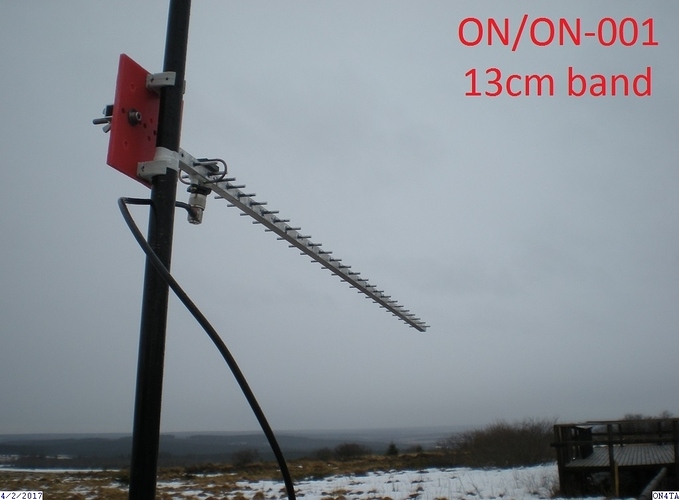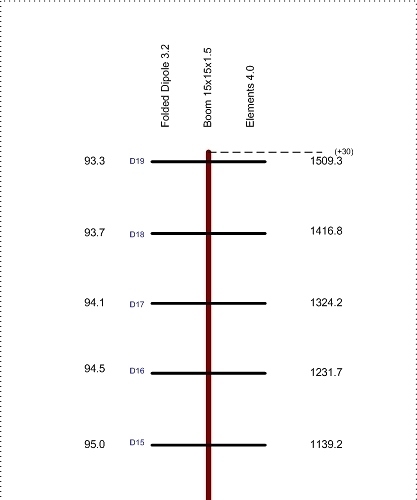Hi Elliott,
Yep similar idea to my own thoughts for my 13 cms yagi.
Being 130mm (13cms) the standard 50mm water pipe will do the job nicely (as long as there is no metal compounds within the plastic make-up - a quick check in the microwave oven to see if it gets warm?). A 1/2 wave is about 65mm so unlike your own I will drill holes through centre of the pipe to take each ‘2mm solid rod’ element within itself. Likewise with the driven section - like yours a folded dipole with access holes on either side of the pipe to get access to terminate and mount a BNC or similar.
Now as the tube is 50mm there will only be about ( 65 - 50 = 15mm/2) about 7.5mm protruding - about a 1/3rd of an inch in old money - on either side of the tube. And ideal for clipping onto the outside of my SOTA rucksack without bending the elements.
Locating the yagi on my SOTA pole is determined by drilling two holes using a cone cutter on either side of the tube. The upper side of the pipe has a smaller hole than the lower. This is to accommodate the tapering nature of the telescoping pole. Another set of holes are drilled at 90 degrees. Either set of holes accommodate for vertical or horizontal polarisation operation. The yagi finds it’s own height on the pole (of course I have predetermined this from the hole diameters). I have used this trick from my telescoping 6M to 70cms SOTA dipole which I have used for many years.
Total price to produce the yagi I reckon a tenner £10 - if that. I have all the parts in my workshop bar the 50mm pipe.
Interesting times - on new band for me.
Es 73
Jack(;>J
 .
.




